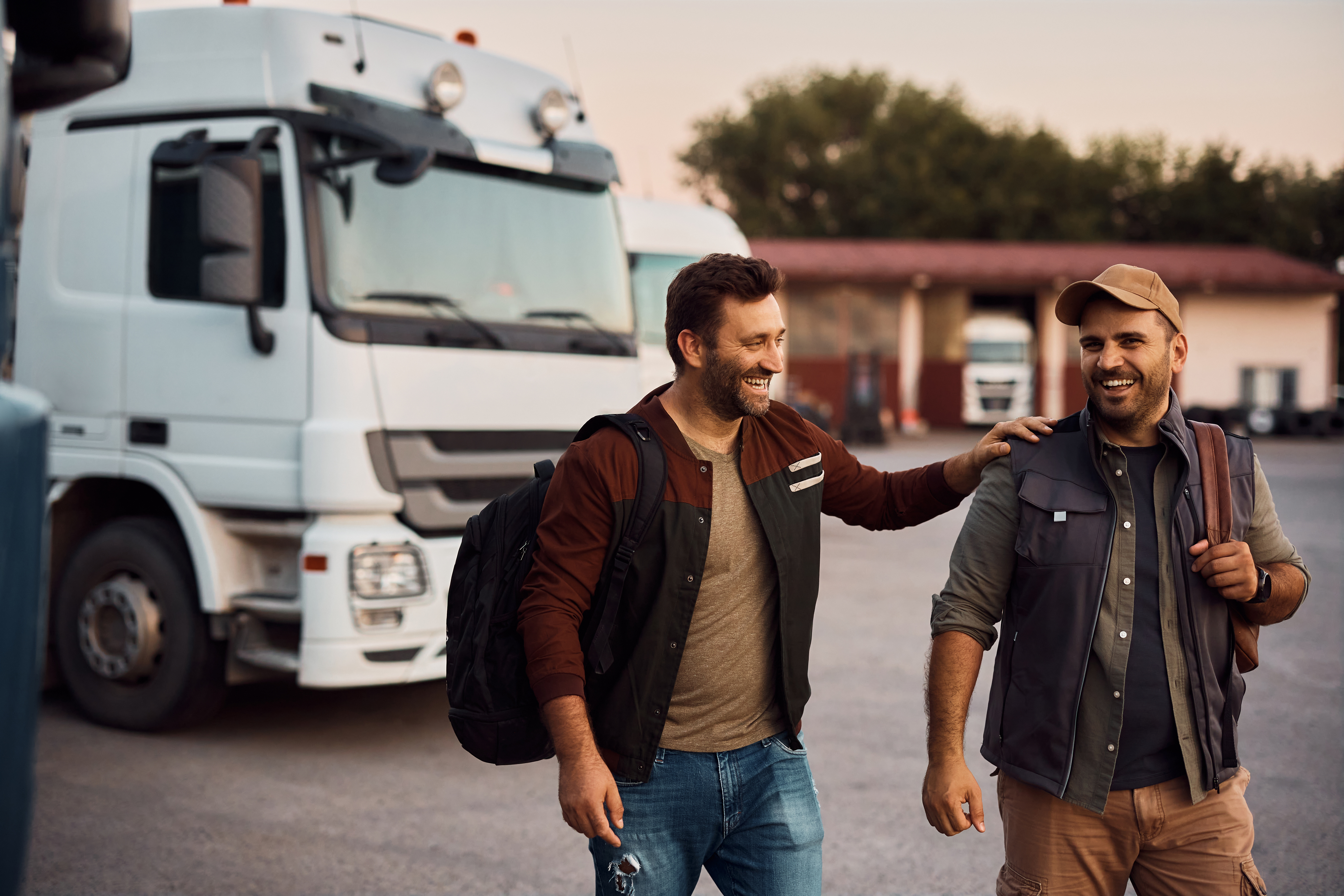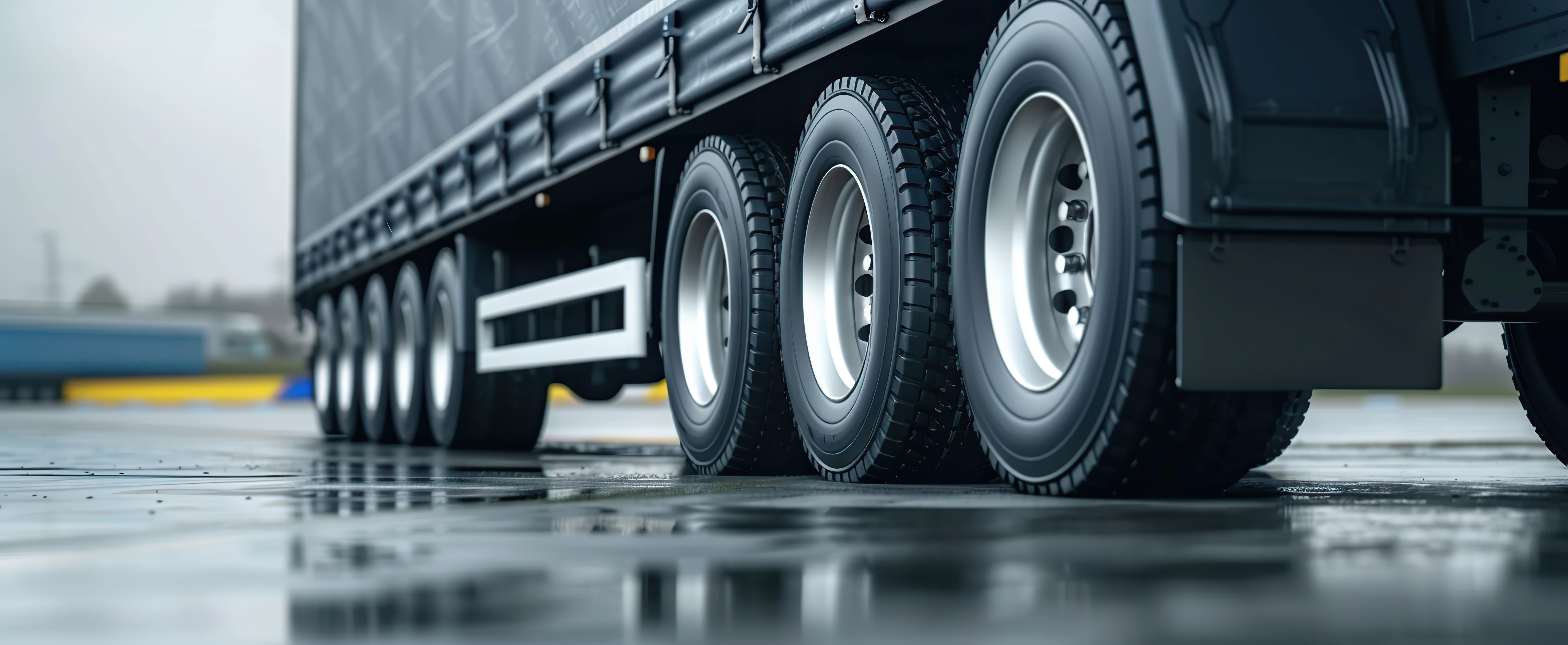
Josh Cousens
Ce que les gestionnaires de flotte doivent savoir sur la réglementation européenne en matière de transport
Créée: 07/04/2025
•
Mise à jour : 07/04/2025
Nous savons que les gestionnaires de flotte doivent jongler avec la pénurie de conducteurs, l'augmentation des coûts du carburant et la tâche considérable que représente la mise en conformité des camions. Ajoutez à cela un réseau complexe de réglementations européennes en matière de transport qui évoluent plus vite que le kilométrage de votre flotte. Cela vous semble-t-il familier ?
Bienvenue sur la ligne de front du transport routier européen.
Des règles relatives aux heures de service aux objectifs en matière d'émissions, le paysage réglementaire de l'UE représente un défi et demi, mais aussi une feuille de route pour un transport routier plus innovant, plus sûr et plus durable.
Que l'on dirige une entreprise familiale en Pologne ou que l'on supervise des opérations paneuropéennes depuis le Royaume-Uni, rester en avance sur les règles n'est pas facultatif. C'est une question de survie.
Pourquoi les gestionnaires de flotte doivent-ils être attentifs ?
Les réglementations européennes en matière de transport affectent presque tous les aspects de votre activité : heures de conduite, émissions des véhicules, contrôles aux frontières, stationnement et conformité numérique. Prendre du retard peut être synonyme d'amendes, de retards ou de pertes de contrats.
La bonne nouvelle, c'est que si vous comprenez le système, vous pouvez l'utiliser à votre avantage. En connaissant les règles, il est plus facile de démarquer votre entreprise de la concurrence.

Les principales réglementations européennes en matière de transport que tout gestionnaire de flotte doit connaître
1. Heures de conduite et législation sur les tachygraphes
L'Union européenne a adopté des règles strictes concernant la durée d'activité des conducteurs sur la route. Les gestionnaires de flotte doivent s'assurer que leurs conducteurs :
- Ne pas conduire plus de 9 heures par jour (extensible à 10 heures deux fois par semaine)
- Ne pas dépasser 56 heures de conduite par semaine.
- Faire une pause de 45 minutes après 4,5 heures de conduite.
Les tachygraphes numériques doivent être installés sur tous les véhicules concernés pour assurer le suivi de la conformité. Le non-respect de cette obligation est l'un des motifs les plus fréquents de sanction.
Pour en savoir plus sur [les règles relatives aux tachygraphes] (https://snapacc.com/newsroom/tachograph-rules-made-easy/).
2. Le paquet mobilité
Ce vaste ensemble de réformes transforme le transport transfrontalier de marchandises. Les principaux changements sont les suivants :
- Retour régulier des véhicules dans leur pays d'origine toutes les 8 semaines
- égalité de rémunération pour les conducteurs travaillant dans les pays d'accueil de l'UE
- Nouvelles règles sur le cabotage et le détachement des conducteurs.
Cela change la donne pour les gestionnaires de flotte qui supervisent le transport international.
Découvrez ici le [paquet mobilité] (https://transport.ec.europa.eu/transport-modes/road/mobility-package-i_en).
3. Émissions et règles environnementales
Les zones à faibles émissions (LEZ), les objectifs de CO2 pour les nouveaux camions et les incitations pour les véhicules électriques ne sont qu'un début.
Les gestionnaires de flotte doivent respecter les normes d'émission Euro 7. Il s'agit notamment de
- Savoir où se trouvent les zones à faibles émissions (en particulier dans des villes comme Paris, Berlin et Milan).
- Investir dans des technologies plus propres ou rénover les véhicules plus anciens.
- Suivre les données relatives aux émissions pour répondre aux exigences en matière de rapports.
4. Tachygraphes intelligents et conformité numérique
L'Union européenne s'oriente vers un contrôle automatisé :
- Les tachygraphes intelligents sont obligatoires dans tous les nouveaux véhicules.
- Ces dispositifs transmettent des données GPS et peuvent être scannés à distance par les autorités.
- Les outils numériques de gestion de flotte ne sont plus un luxe - ils sont votre filet de sécurité juridique.
5. Règles transfrontalières en matière de stationnement et de repos
Les gestionnaires de flotte doivent prévoir des aires de stationnement et de repos conformes aux règles relatives au bien-être des conducteurs :
- Les conducteurs doivent passer des périodes de repos hebdomadaires à l'extérieur de la cabine.
- Le stationnement sécurisé des camions devient obligatoire dans certaines régions.

Questions fréquemment posées
Quelles sont les règles de l'UE en matière d'heures de conduite pour les conducteurs de poids lourds ?
Les gestionnaires de flotte doivent s'assurer que les conducteurs respectent les limites fixées par l'UE : 9 heures par jour (avec une certaine flexibilité), des pauses appropriées et des plafonds de conduite hebdomadaires/mensuels.
Qu'est-ce que le paquet mobilité de l'UE pour les camions ?
La réforme du paquet Mobilité garantit une concurrence loyale, le bien-être des conducteurs et un contrôle adéquat du transport international de marchandises et du transport routier, grâce à des règles plus strictes en matière de cabotage, de rémunération et de retour.
Que se passe-t-il si vous enfreignez les règles du tachygraphe ?
Les conducteurs qui enfreignent les règles du tachygraphe peuvent s'attendre à des amendes, à des interdictions potentielles et à une réputation ternie pour l'entreprise. La non-conformité n'est pas seulement un risque, elle coûte cher.
Les pays de l'UE imposent-ils des normes d'émission pour les camions ?
Oui. La plupart des grands pays et villes d'Europe ont mis en place des politiques et des objectifs stricts en matière d'émissions afin de réduire la pollution de l'air par les véhicules, de sorte que les opérateurs de flottes doivent anticiper.
La vue d'ensemble
Les gestionnaires de flotte ne se contentent pas de gérer des camions ; ils gèrent également les risques, la conformité et la réputation de leur entreprise. Comprendre la réglementation européenne en matière de transport est la différence entre prospérer dans le transport moderne et rester à la traîne.
SNAP rend ce travail plus facile à gérer. Des paiements numériques au stationnement des camions en passant par les solutions de conformité, nous soutenons les personnes qui font avancer l'Europe.
Les réglementations se renforcent, mais les gestionnaires de flotte compétents ? Ils resserrent aussi leur jeu.
Prêt à se mettre en conformité, à rester compétitif et à piloter l'avenir du fret ? [Déverrouillez SNAP dès aujourd'hui] (https://register.snapacc.com/en).



